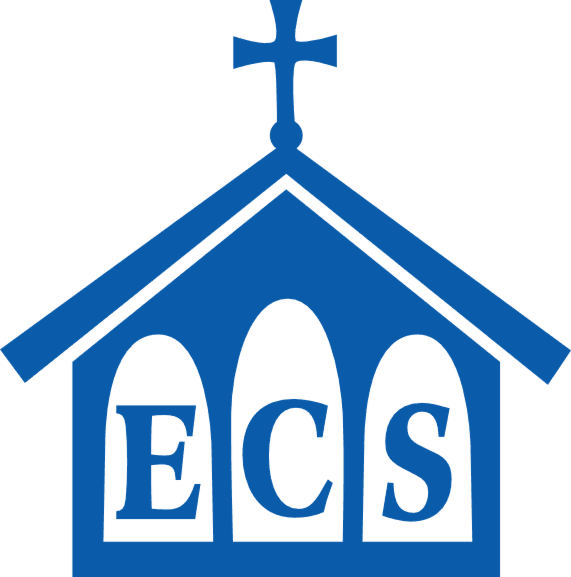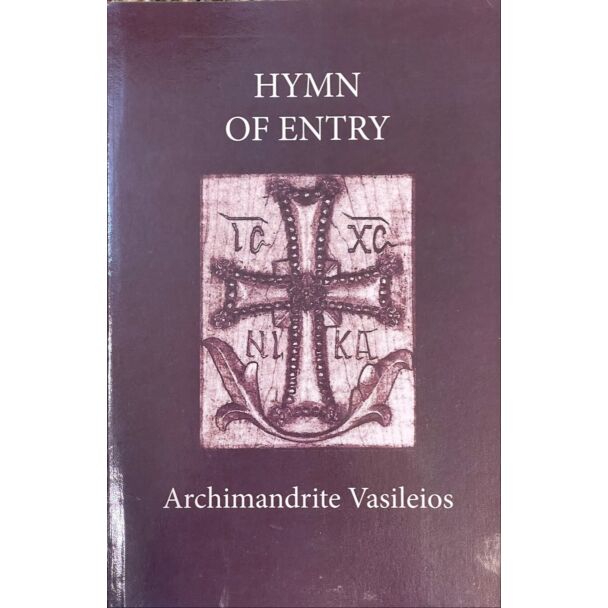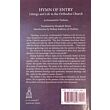Hymn of Entry: Liturgy and Life in the Orthodox Church
Archimandrite Vasileios of Stavronikita
Translated from the Greek by Elizabeth Brière
With a foreword by Bishop Kallistos of Diokleia
Translated from the Greek by Elizabeth Brière
With a foreword by Bishop Kallistos of Diokleia
Publication Data: Crestwood, NY: St Vladimir’s Seminary Press, 1998
Format: softcover
Number of Pages: 138
Dimensions (l × w × h): 21.6 cm × 14.0 cm × 1.1 cm
ISBN: 0‒88141‒026‒8
Archimandrite Vasileios of Stavronikita
Translated from the Greek by Elizabeth Brière
With a foreword by Bishop Kallistos of Diokleia
Number One of Contemporary Greek Theologians
“Hymn of Entry was written partly in response to a specific request. The Holy Mountain, as is well known, has displayed a deep reserve towards ‘ecumenism,’ and in particular towards the ‘dialogue’ between Orthodoxy and Rome. Athonite spokesmen were asked some years ago to explain this attitude, and that is what the present book seeks to do. But Fr Vasileios has deliberately refused to limit the discussion to the subject of ‘Christian unity,’ narrowly understood and considered on it own. It has to be seen in the context of more fundamental questions: What is theology? What is the Church? What are the practical, living implications of the dogma of the Holy Trinity? The specific statements that the author makes concerning, for instance, intercommunion or papal infallibility will seem to many Western readers unduly austere. But these statements should be considered, not in isolation, but within their total context—within the all-embracing vision of the Trinity, the Incarnation and the Eucharist by which Fr Vasileios is everywhere inspired. ”
—“Foreword”
CONTENTS
FOREWORD
INTRODUCTION
I. THEOLOGY AS A LITURGY OF THE CHURCH
1. Church, Gospel and Dogma
2. “Those who have sung the harmonious hymn of theology”
3. Theologians and liturgical gatherings
4. How to study and communicate the words of the Fathers
5. “Supreme unknowing...”
II. THE STRUCTURE OF THE CHURCH AS AN INITIATION INTO THE MYSTERY OF THE TRINITY
1. The unity of the Church in the image of the Holy Trinity
2. The truth as lived by the whole body of the people
III. THE DIVINE LITURGY AS A THEOLOGICAL RITE
1. “The rite is not a type, but the reality of sacrifice”
2. The apophatic character of the Liturgy
3. “Those who have transfigured their lives liturgically”
4. The Divine Liturgy as a revelation of the new creation
5. “That they may have life” (John 10:10)
6. The breadth of the Liturgy
7. “We who in a mystery represent the cherubim”
8. Interpenetration in the Liturgy
9. “He is master of things in heaven and on earth”
IV. THE ICON AS A LITURGICAL ANALOGY
1. “Time and nature are made new”
2. Iconographic expression and the ethos of Orthodox sanctity
3. The iconographic light that knows no evening
4. The world of Transfiguration
5. “Giver of Comfort”
V. SPIRITUALITY AS “BONDAGE” TO FREEDOM
1. What is true exerts authority by its presence
2. Heresy is self-destructive
3. “The earth produces of itself”
4. “Be still and know”
5. “All things, I believe, can be seen summed up”
VI. DYING AND BEHOLD WE LIVE
1. The Gift of Eternal Life
2. Losing and Finding
3. The liturgy in the heart of things
4. Repentance and love
5. Separated from all, united with all
6. A saint of former times
Abbreviations
Glossary
Format: softcover
Number of Pages: 138
Dimensions (l × w × h): 21.6 cm × 14.0 cm × 1.1 cm
ISBN: 0‒88141‒026‒8
Archimandrite Vasileios of Stavronikita
Translated from the Greek by Elizabeth Brière
With a foreword by Bishop Kallistos of Diokleia
Number One of Contemporary Greek Theologians
“Hymn of Entry was written partly in response to a specific request. The Holy Mountain, as is well known, has displayed a deep reserve towards ‘ecumenism,’ and in particular towards the ‘dialogue’ between Orthodoxy and Rome. Athonite spokesmen were asked some years ago to explain this attitude, and that is what the present book seeks to do. But Fr Vasileios has deliberately refused to limit the discussion to the subject of ‘Christian unity,’ narrowly understood and considered on it own. It has to be seen in the context of more fundamental questions: What is theology? What is the Church? What are the practical, living implications of the dogma of the Holy Trinity? The specific statements that the author makes concerning, for instance, intercommunion or papal infallibility will seem to many Western readers unduly austere. But these statements should be considered, not in isolation, but within their total context—within the all-embracing vision of the Trinity, the Incarnation and the Eucharist by which Fr Vasileios is everywhere inspired. ”
—“Foreword”
CONTENTS
FOREWORD
INTRODUCTION
I. THEOLOGY AS A LITURGY OF THE CHURCH
1. Church, Gospel and Dogma
2. “Those who have sung the harmonious hymn of theology”
3. Theologians and liturgical gatherings
4. How to study and communicate the words of the Fathers
5. “Supreme unknowing...”
II. THE STRUCTURE OF THE CHURCH AS AN INITIATION INTO THE MYSTERY OF THE TRINITY
1. The unity of the Church in the image of the Holy Trinity
2. The truth as lived by the whole body of the people
III. THE DIVINE LITURGY AS A THEOLOGICAL RITE
1. “The rite is not a type, but the reality of sacrifice”
2. The apophatic character of the Liturgy
3. “Those who have transfigured their lives liturgically”
4. The Divine Liturgy as a revelation of the new creation
5. “That they may have life” (John 10:10)
6. The breadth of the Liturgy
7. “We who in a mystery represent the cherubim”
8. Interpenetration in the Liturgy
9. “He is master of things in heaven and on earth”
IV. THE ICON AS A LITURGICAL ANALOGY
1. “Time and nature are made new”
2. Iconographic expression and the ethos of Orthodox sanctity
3. The iconographic light that knows no evening
4. The world of Transfiguration
5. “Giver of Comfort”
V. SPIRITUALITY AS “BONDAGE” TO FREEDOM
1. What is true exerts authority by its presence
2. Heresy is self-destructive
3. “The earth produces of itself”
4. “Be still and know”
5. “All things, I believe, can be seen summed up”
VI. DYING AND BEHOLD WE LIVE
1. The Gift of Eternal Life
2. Losing and Finding
3. The liturgy in the heart of things
4. Repentance and love
5. Separated from all, united with all
6. A saint of former times
Abbreviations
Glossary
Write Your Own Review






